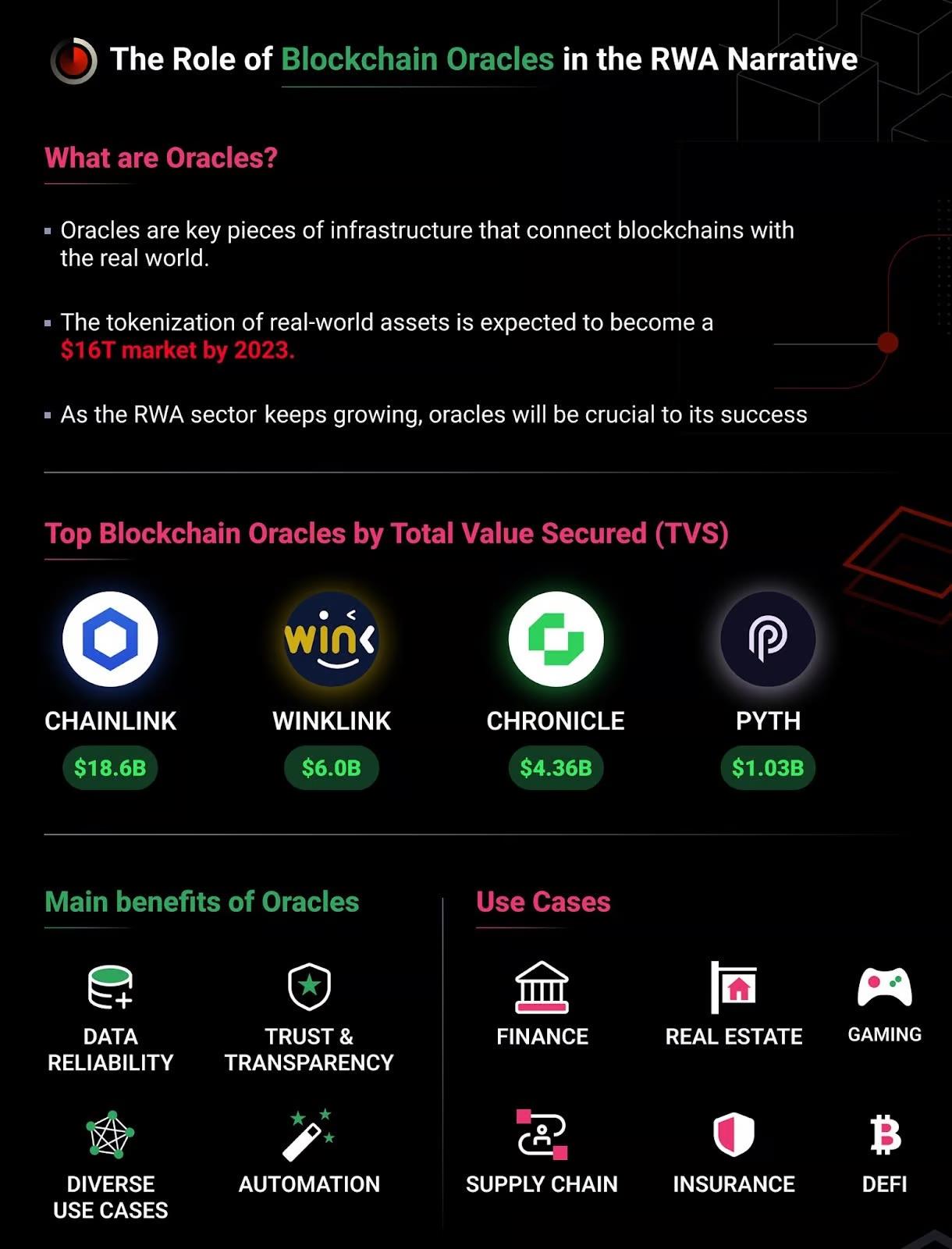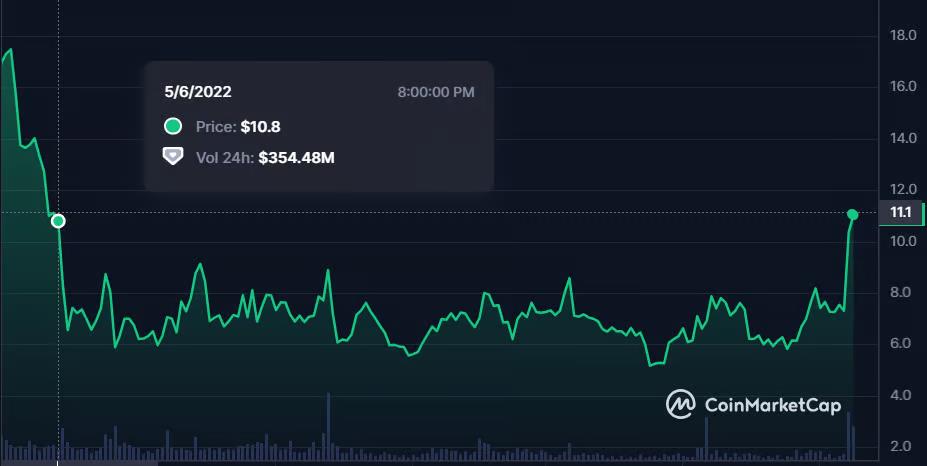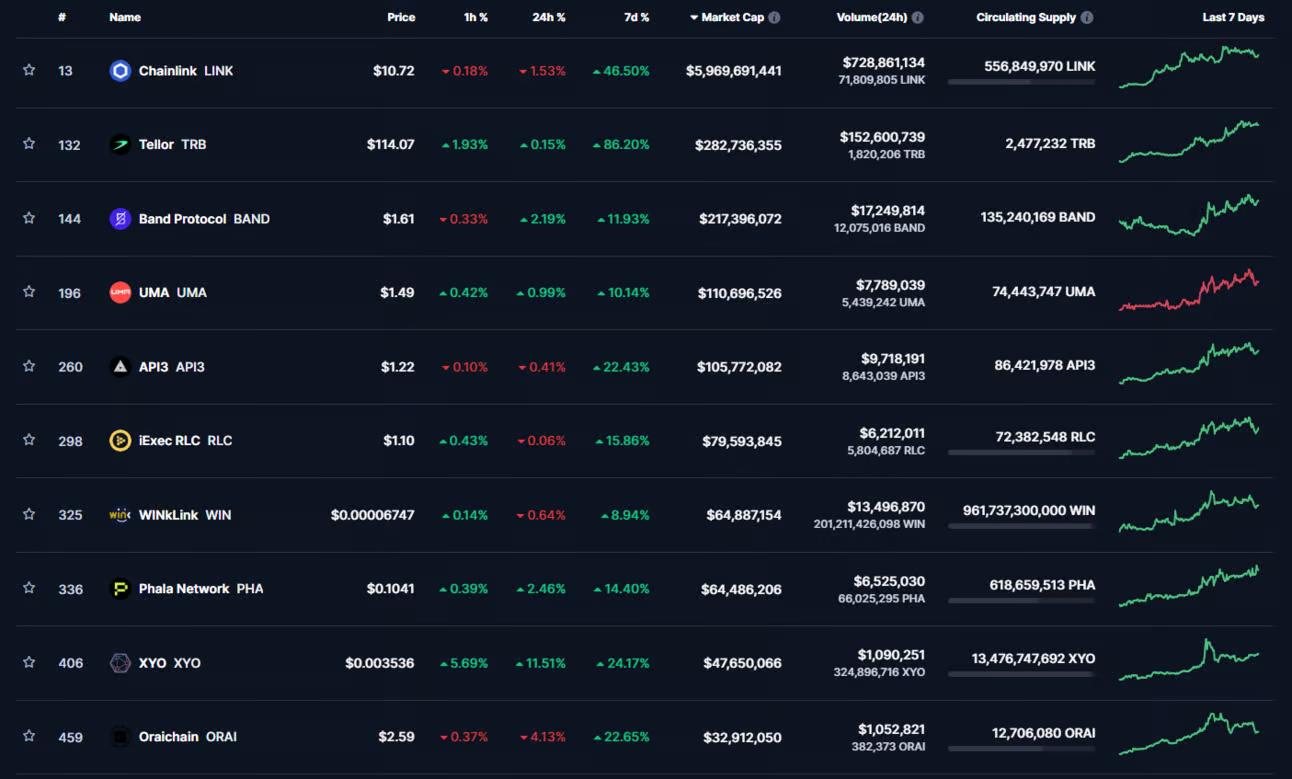Written by: Jose Oramas
Translated by: DeepTech TechFlow

Chainlink has been working.
Despite its token recently surging, the protocol has been collaborating this year with some of the world's largest financial institutions, such as ANZ Bank, DTCC, Citibank, BNY Mellon, and more.
What's the reason behind these collaborations, and why should you care? The tokenization of real-world assets could bring trillions of dollars to the capital markets and DeFi sector. More importantly, it can achieve the original goal of cryptocurrency—by making it more accessible to the masses and efficiently improving our outdated financial systems.
Chainlink is currently in a pivotal position to play a role in the success and mass adoption of RWAs. Let's delve into it.
The importance of oracles in connecting blockchain with the real world
Oracles can be seen as middleware where multiple networks and applications can retrieve accurate external data and execute smart contracts based on these inputs.
Their main job is to provide off-chain data to smart contracts, as they cannot independently fetch information outside their respective blockchain networks.

The value of oracles like Chainlink in the RWA narrative becomes evident; they bridge the information gap between TradFi and DeFi, which is crucial for the success of RWAs and tokenized markets. Without oracles, blockchain cannot interact with the outside world, and vice versa, making tokenization impractical and data retrieval impossible.
Next, we will review how Chainlink's features, data feeds, reserve proof, and CCIP are valuable for the tokenization of RWAs.
The surge in RWAs could be a catalyst for Chainlink
With the potential influx of institutional capital, Chainlink and competing oracles may see a surge in demand for their services. Why?
-
RWA protocols require accurate import of off-chain data.
-
Institutions will want access to crypto-native RWAs across different chains or institutional native RWAs across tokenized markets.
-
By serving as middleware between DeFi and TradFi, oracles can eliminate the complexity of interacting with blockchain-based protocols.
-
Additionally, by connecting multiple public and private blockchains, financial institutions can trade RWAs in a cross-chain and cross-currency manner.
-
Chainlink addresses these issues using the following services:
CCIP: Cross-Chain Interoperability Protocol
Multiple financial entities have been seeking CCIP this year, as it allows traditional backend infrastructure and dApps to interact with any blockchain network through a single middleware solution.
In September, post-trade financial services company DTCC used CCIP in Swift's blockchain interoperability project. Similarly, Australia and New Zealand Banking Group (ANZ) utilized CCIP to allow customers to transfer ANZ-issued stablecoins across chains to purchase nature-based assets.
Chainlink Functions and Data Feeds
Chainlink Functions is a serverless platform that allows Web3 developers to connect smart contracts with Web2 APIs. Data feeds service is just as it sounds—it's a decentralized off-chain system that retrieves real-world data onto the chain to validate contracts. Functions and data feeds can help transmit RWA data to on-chain protocols in real-time, even as the data is being transmitted to Web3.
Chainlink Reserve Proof
Verifies off-chain assets supporting on-chain assets in DeFi projects.
How Far Can Chainlink Go with RWAs?
It's been an interesting year for LINK; the token has been mostly range-bound throughout 2022 and 2023, but recently saw an explosive surge in price. From $5.9 in early September, LINK reached $11 on October 25, an increase of about 90%.

Looking at this chart, we notice that LINK has broken the $10 resistance level for the first time since May 2022, and the token is still far from its ATH of $50 during DeFi Summer.
That said, LINK still has a lot of room to grow, but what's behind the growth? Potential driving forces include:
- Key developments and updates in the Chainlink ecosystem, such as the upcoming Staking v0.2 platform;
- Five Chainlink services integrated into seven different chains, including Base and Arbitrum;
- Numerous collaborations with financial entities like SWIFT, utilizing Chainlink's Cross-Chain Interoperability Protocol (CCIP) for asset tokenization and cross-chain interoperability;
- The surge in TVL in the RWA space and the hype surrounding this narrative.
The last two reasons in the above list could propel LINK to new highs in the coming years. If RWAs can attract 1% of the global total asset market (about $90 trillion), approximately $9 trillion in value will enter the cryptocurrency market.
By the same logic, by 2030, oracles facilitating the transmission of tokenized RWA data and the interfaces needed to interact with blockchain-based applications could generate approximately $90 billion in revenue, and the price could appreciate significantly, surpassing the previous ATH by 2021.
The Surge of Oracles and Competition for Chainlink
By market cap, top oracles have seen healthy growth in the past 30 days. Most likely, they have benefited from the RWA narrative, but their main sources of growth are recent protocol developments, integrations with multiple chains, and other significant news.

If we try to find oracles collaborating to promote RWA tokenization, Chainlink stands out as the only one. However, even though it dominates in TVL and market cap, it doesn't mean there's no competition.
Tellor
The second-largest oracle by market cap. While we can attribute the token's price increase to higher network activity, RWA demand, and its recent deployment to the Manta Mainnet, most analysts believe the token's surge is due to whale manipulation.
Band Protocol
Built on the Cosmos blockchain, Band Protocol operates as a chain-agnostic oracle. Band Protocol's growth has largely been achieved through a collaboration with Horizen's EVM-compatible sidechain EON.
UMA
Unlike most oracles, UMA allows developers to create synthetic assets. Synthetic assets are encapsulated versions of indices on the blockchain, essentially tokenized stocks. UMA has risen following a series of on-chain governance modifications and the RWA narrative.
API3
API3 can be seen as a cheaper and more accessible oracle. It allows projects to access external data through decentralized application programming interfaces (dAPIs). API3 has risen after being integrated into five popular networks: Mantle, Base, Linea, Kava, and Rootstock.
Regarding Tokens and Empowerment
The performance of a token doesn't necessarily reflect the performance of a project. Perhaps the project has solid fundamentals and a good product. Tokens can be used to pay node validators for their duties and tasks.
But this makes governance and proof of stake seem useless, as long as its product has good market fit, the protocol can function well without tokens. Sometimes, governance defends its existence, but more often, tokens are just a fundraising mechanism based on future protocol performance and speculation.
Protocols using ERC-20 tokens can simply charge fees in ETH, and their products can do well. That's why in some protocols, there's a significant difference between price and TVL. In other words, a project may have a large TVL due to its good product and a lot of funds locked in its contracts, but if the project focuses on providing more value capture for its tokens, it can narrow the gap between these two metrics.
So, Why Do We Need the LINK Token?
For example, LINK is used to pay node validators for data retrieval, and recently, due to its PoS release—and the upcoming PoS v0.2.
But beyond that, the token doesn't provide any utility. Some may argue that Chainlink as a business can thrive without the LINK token. If we apply this logic to RWA-based tokens, we run into a problem; most tokens from RWA protocols would automatically become income assets, something the SEC would surely love.
Furthermore, when dealing with tokenization of assets related to institutions and real assets, governance and decentralization become somewhat useless.
In this sense, RWA protocols are more likely to succeed if they focus on the following:
- Obtain licensing—this would give them a competitive advantage;
- Audit smart contracts for risks and other vulnerabilities through protocols like PeckShield or CertiK;
- Provide investor assurance—this can be achieved by using Chainlink's proof of reserves to verify on-chain assets are backed by off-chain assets and a central custodian.
Final Thoughts
The crypto community often emphasizes the benefits and uses of blockchain technology across multiple industries.
If that's the case, we should pay more attention to the tokenization of real-world assets (RWAs) and how this sector can provide the practicality we just discussed. Chainlink has been busy upgrading its platform and integrating with some of the most popular chains in the market.
The value of Chainlink in the RWA narrative lies in its efforts to become a key infrastructure that facilitates the trading of these assets on-chain, bridging traditional finance and decentralized finance.
免责声明:本文章仅代表作者个人观点,不代表本平台的立场和观点。本文章仅供信息分享,不构成对任何人的任何投资建议。用户与作者之间的任何争议,与本平台无关。如网页中刊载的文章或图片涉及侵权,请提供相关的权利证明和身份证明发送邮件到support@aicoin.com,本平台相关工作人员将会进行核查。




